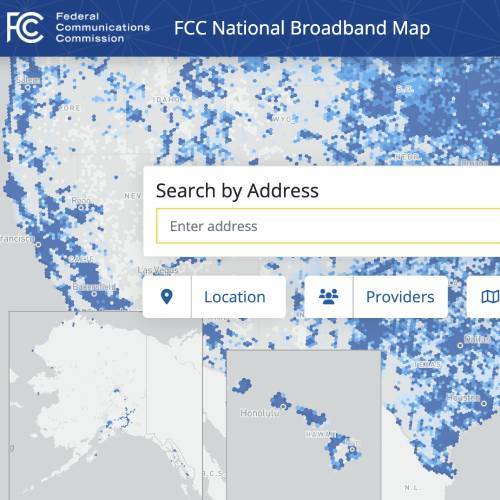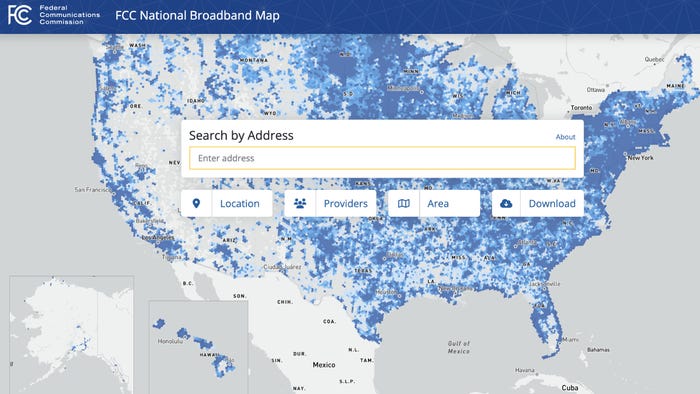In a blog post following the FCC's map release, the NTIA said it is still 'on track' to make BEAD allocations by June 30.

The FCC released the second version of its national broadband map today. Following a challenge process and tweaks to its underlying fabric, the new version reflects a net increase of 1 million broadband serviceable locations, accounting for roughly 2 million removed and 3 million added. That includes nearly 330,000 more unserved locations than November's draft version of the map, said FCC Chairwoman Jessica Rosenworcel in a note, or a 0.2% increase.
Overall, the FCC's broadband mapping effort shows there are 114 million broadband serviceable locations in the US, and 8.3 million unserved locations. For comparison's sake, Rosenworcel noted that the old version of the national broadband map – which relied on census block information instead of location-level data – counted just 8.1 million census blocks as broadband-serviceable.
Figure 1:  (Source: FCC)
(Source: FCC)
Rosenworcel confirmed that the FCC received challenges to availability data for more than 4 million locations, and that over 75% have been resolved with "the majority" leading to broadband availability updates on the map.
"We will continue to accept challenges every day, every week and every month, and those challenges will continue to improve the map," said Rosenworcel.
To BEAD or not to BEAD?
The big question on everyone's mind since the map's first release in November has been whether the second version would be good enough for the NTIA to use for Broadband Equity, Access and Deployment (BEAD) allocations on June 30. As per the $42.5 billion BEAD program, every state gets an initial $100 million ($25 million for territories), with additional funding to be allocated, using the FCC map, based on the states' number of unserved and "high-cost" locations.
In a blog post today, NTIA said it is still "on track" to make allocations by that date, as planned.
However, noting that the "overall national story remains consistent," given the modest addition of 0.2% unserved locations, the NTIA leaned into the fact that time is of the essence for BEAD to support its case, rather than vast improvements to the map.
Further, the agency earlier this month outlined a challenge process through which states and territories will be able to use their own data to finalize their list of BEAD eligible locations after allocations are made in June. (Though some in the industry are pushing back on that process.)
"NTIA is confident that with this data as a baseline, we will be able to effectively allocate funds by the end of June. We will continue to monitor the FCC's updates to availability data to ensure that we make a well-informed allocation of these vital funds," said NTIA. "Ultimately, we know tens of millions of Americans do not have access to high-speed Internet service. To serve these Americans, it is vital we continue to implement this program with urgency and begin the deployment of high-speed Internet infrastructure through the BEAD program as soon as possible."
It remains to be seen whether today's map update and the NTIA's reassurances quell the concerns of members of Congress, some of whom – like Nevada Senator Jacky Rosen – have sought to delay BEAD allocations until the FCC's map can be further improved. Notably, in a tweet on Tuesday afternoon, Sen. Rosen said she was "proud to announce that the updated version includes more locations in NV without access to high-speed internet ... This fix will help us get more [funds] to connect more households to the internet."
There may be other avenues of recourse following BEAD allocations, however. For example, speaking with Light Reading for a recent episode of The Divide, former nominee for FCC Commissioner Gigi Sohn suggested the FCC could potentially reallocate unspent funds from the Rural Digital Opportunity Fund (RDOF) for states that feel they've been "wronged" by the map.
"I think the FCC and NTIA have to think about ... what are we gonna do to satisfy those states that feel that they've gotten the wrong end of the stick with regard to the map? Because there will be more than several states that are gonna complain," she said.
Related posts:
— Nicole Ferraro, editor, Light Reading, and host of "The Divide" on the Light Reading Podcast.
[Ed. note: This story was updated on May 30, 2023, at 4:45 p.m. ET to reflect Sen. Rosen's comments.]
About the Author(s)
You May Also Like











